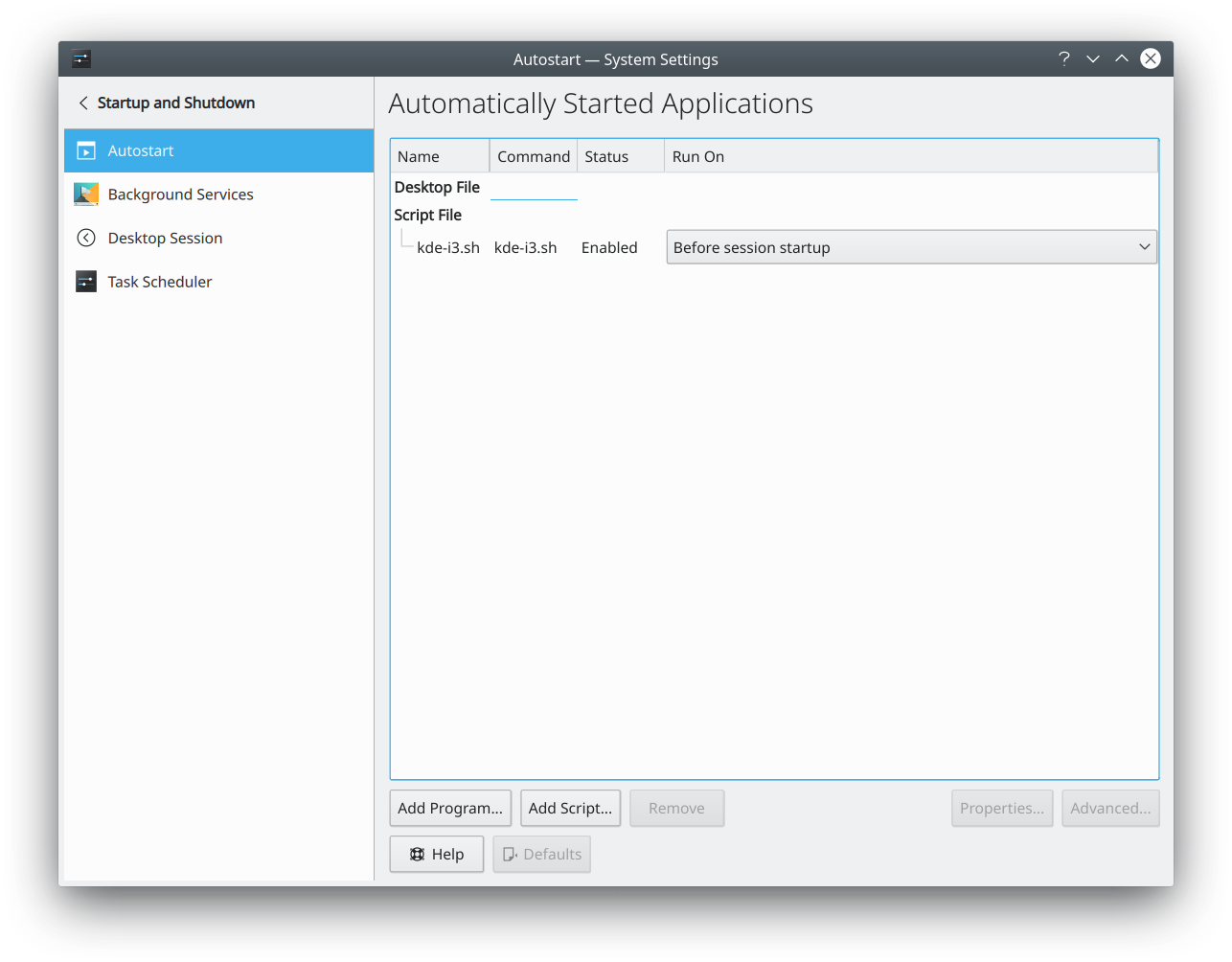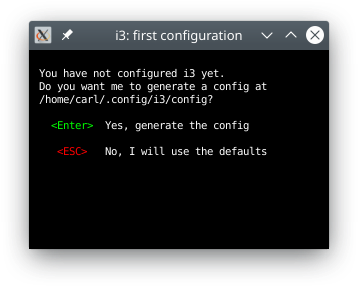Tutorials/Using Other Window Managers with Plasma/uk: Difference between revisions
(Created page with "===Встановлення===") |
(Created page with "*Створіть скрипт командної оболонки (наприклад, kde-i3.sh) із таким вмістом:{{Input|1=<nowiki> #!/bin/sh export KDEWM=/us...") |
||
| Line 23: | Line 23: | ||
[[Image:kde-i3-integration.png]] | [[Image:kde-i3-integration.png]] | ||
* | *Створіть скрипт командної оболонки (наприклад, kde-i3.sh) із таким вмістом:{{Input|1=<nowiki> | ||
#!/bin/sh | #!/bin/sh | ||
export KDEWM=/usr/bin/i3 | export KDEWM=/usr/bin/i3 | ||
</nowiki>}} | </nowiki>}} | ||
Замініть /usr/bin/i3 на шлях до бажаної для вас програми для керування вікнами. | |||
* Start '''System Settings''' | * Start '''System Settings''' | ||
Revision as of 09:10, 19 January 2019
Вступ
KWin is the default window manager (WM) in Plasma and has lot of features, but only support floating windows. Plasma let you use another window manager for example i3, bspwm or any other tilling window manager.
Most window managers require few, if any, changes to their configuration files.
Some considerations to be aware of when using another window manager:
- Tiling window managers may have problems with components like panels. For some configuration options will help alleviate issues
- Most window managers do not have their own compositors, and therefore lack such features as animations and transparency. If such effects are desired, a compositor, such as compton, is required
Using Another Window Manager with Plasma
Single User: Using System Settings
This is the simplest method, but only affects the user for which it is added
- Створіть скрипт командної оболонки (наприклад, kde-i3.sh) із таким вмістом:
#!/bin/sh export KDEWM=/usr/bin/i3
Замініть /usr/bin/i3 на шлях до бажаної для вас програми для керування вікнами.
- Start System Settings
- Select Startup and Shutdown
- Select Autostart
- Click the Add script button below the list
- Enter the location of the script created earlier, or use the folder icon to use a dialog to find it. Click OK, the script will be added to the list
- In the Run On column, select Before Session Startup from the drop down list
- The chosen window manager will be used the next time you log in
System Wide: Adding an XSession
If superuser (root) access is available, a new session file for X.org can be created.
This has several advantages: the alternate session is available to all users of the system, and changing back to KWin is as simple as logging out and then back in
To add a session for an alternate window manager, as the superuser
- Copy the existing Plasma session flie
cp plasma.desktop plasma-i3.desktop
- Using a text editor, open the file and change the Exec line, and optionally the Description
[Desktop Entry] Type=XSession Exec=env KDEWM=/usr/bin/i3 DesktopNames=KDE Name=Plasma (i3) Comment=Plasma by KDE w/i3 X-KDE-PluginInfo-Version=5.14.4
- The display manager must be restarted, most easily by rebooting
I3 configuration
Встановлення
Before starting the configuration, you should make sure i3 or i3-gaps are installed on your system. If not use your packet manager or Discover to install one of this two packages. You should also install a compositor, because unlike KWin, i3 don't ship with an integrated compositor. I recommend the use of compton.
Створення типових налаштувань i3
Open a console and type i3-config-wizard. This command open a small windows that will help you create a configuration file.
Some i3 keybinding can be used to provide better integration with Plasma.
# Open logout confirmation screen with $mod+e bindsym $mod+Shift+e exec qdbus org.kde.ksmserver /KSMServer org.kde.KSMServerInterface.logout -1 -1 -1 # Open krunner with $mod+d bindsym $mod+d exec qdbus org.kde.kglobalaccel /component/krunner org.kde.kglobalaccel.Component.invokeShortcut 'run command'
Some i3 window rules help you to have notification and some other plasma windows as floating windows:
for_window [title="Desktop — Plasma"] kill; floating enable; border none for_window [class="plasmashell"] floating enable; for_window [class="Plasma"] floating enable; border none for_window [title="plasma-desktop"] floating enable; border none for_window [title="win7"] floating enable; border none for_window [class="krunner"] floating enable; border none for_window [class="Kmix"] floating enable; border none for_window [class="Klipper"] floating enable; border none for_window [class="Plasmoidviewer"] floating enable; border none for_window [class="(?i)*nextcloud*"] floating disable
bspwm
For the most part, bspwm requires little additional configuration.
- A single Plasma panel, in most cases, is detected properly and bspwm will not place windows in its space. If the panel does present a problem, or when using multiple panels, the following may be added to .bspwmrc
bspc config top_padding size
where size is the size in pixels of the panel. Also valid are bottom_padding, left_padding, and right_padding. As many of these directive may be used as necessary for multiple panels.





